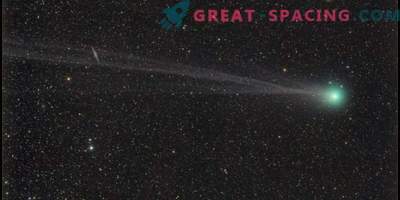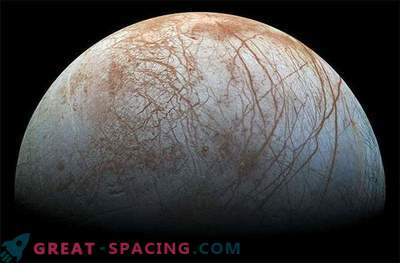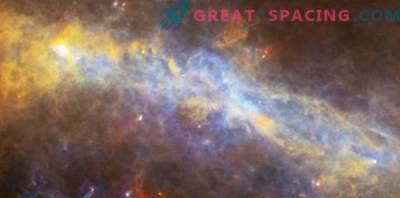
Artistic vision of an asteroid (3200) Phaeton
Blue asteroids are rare, and blue comets are considered something unheard of. An international team of scientists studied the object (3200) Phaeton - a strange asteroid, which sometimes behaves like a comet. It turns out that this is an even stranger object than previously thought.
With the help of telescopes in Hawaii and Arizona, scientists investigated the sunlight reflected from the blue surface of Phaeton. Blue asteroids (reflecting most of the light in the blue part of the spectrum) make up a small volume of the list of known asteroids. Most of them are dull gray-red (composition affects the color of the surface).
Phaeton is remarkable for two reasons: it is considered one of the bluest asteroids or comets in the Solar System and its orbit is so close to the Sun that the surface heats up to 800 ° C (enough to melt aluminum). But astronomers are also interested in studying the object, because it shows the properties of both the asteroid and the comet (appearance and behavior).
Phaeton always appears as a point in the sky, like thousands of other asteroids, and not in the form of a comet - a drop with a tail. However, the object leads to the annual Geminid meteor shower, which can be observed in early to mid-December. These phenomena occur when the Earth passes through traces of dust left by the orbit of a comet. The origin of the fragments depends on the orientation of the comet's orbit relative to our planet. Phaethon is also believed to act as the parent body of the Geminid meteor shower due to its similarity in orbit. Before the discovery of Phaeton in 1983, it was assumed that all known meteor showers are associated exclusively with comets, and not asteroids. At that time, Phaethon was believed to be a burnt comet. But usually comets are red, not blue or blue. It turns out that an eccentric orbit hints at a dead comet, but the object is more like an asteroid.
Moreover, Phaethon has a tiny dust tail that is released when it approaches the Sun. New information from NASA's infrared telescope on Mauna Kea (Hawaii) allowed to re-look at the celestial body. Scientists believe that Phaeton could have been bound or split off from (2) Pallas - a big blue asteroid distant from the Sun.
It also turned out that Phaeton now seems darker than previously thought (half of the reflectivity of Pallas). It is noticeable that the blue color is equally distributed on all parts of the surface, which means the Sun has influenced it in the recent past. Now scientists are closely watching the 2005 UD - another small asteroid that can resemble Phaeton by properties.











































